PAUL HENDRIKSE
INDEX
01. The Ideal Form
02. Les XX
03. The Particular Unity of Same and Other
04. Hauntology of Smoke and Ochre
05. Procedures for Underground
06. A Vague Uneasiness
01. The Ideal Form
02. Les XX
03. The Particular Unity of Same and Other
04. Hauntology of Smoke and Ochre
05. Procedures for Underground
06. A Vague Uneasiness
CONTACT
paulhendrikse@gmail.com
paulhendrikse@gmail.com
01. The Ideal Form
The Ideal Form is a series of works that investigate the legacy of socialist and flamingant Lode Craeybeckx (1897-1976). Craeybeckx was the mayor of Antwerp from 1947 till his death in 1976, and one of the most important figures of post-war Antwerp. Craeybeckx had a vast array of interests of which language and culture were the most important. In 1950 he developed the plan to change the Middelheim Park, that had been destroyed during the second world war, into an exhibition site for sculpture. The first exhibition proved a succes and therefor the city council decided to establish a museum on the premises. This museum had the task to organize biannuals for sculpture in the uneven years, and as such to become the biannual of the north, next to the Venice biannual. Craeybeckx initiated acquisitions and studiovisists abroad. He undertook trips and recommended artists and works for the museum. Although he is remembered for his enthusiastic engagement on behalf of the Middelheim Museum, Craeybeckx also established a complex collection, whose political undertones The Ideal Form brings, if partially, to the fore.
The Ideal Form is a series of works that investigate the legacy of socialist and flamingant Lode Craeybeckx (1897-1976). Craeybeckx was the mayor of Antwerp from 1947 till his death in 1976, and one of the most important figures of post-war Antwerp. Craeybeckx had a vast array of interests of which language and culture were the most important. In 1950 he developed the plan to change the Middelheim Park, that had been destroyed during the second world war, into an exhibition site for sculpture. The first exhibition proved a succes and therefor the city council decided to establish a museum on the premises. This museum had the task to organize biannuals for sculpture in the uneven years, and as such to become the biannual of the north, next to the Venice biannual. Craeybeckx initiated acquisitions and studiovisists abroad. He undertook trips and recommended artists and works for the museum. Although he is remembered for his enthusiastic engagement on behalf of the Middelheim Museum, Craeybeckx also established a complex collection, whose political undertones The Ideal Form brings, if partially, to the fore.

02. Quiet Signs
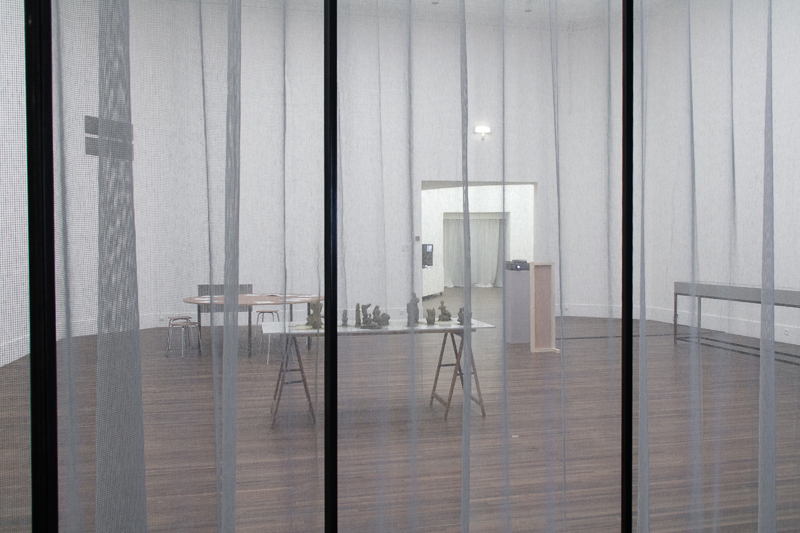
01. Abbreviate, Suspend, Envelope the Vaguest Shapes, video 5:44 min., sound, presented in a pavilion

03. Middelheim, The Interviews, audiowork, paper
02. Quiet Signs. For an exhibition at Muhka I produced clay and concrete models that were shown on a special display unit; something between a table and a dysfunctional tilted stage. The elements on display were replica’s or fragments of objects found in the city that are connected to the legacy of Craeybeckx. Water drops that were slowly dripping from the ceiling onto the objects caused their painted color to run down the unit and change their appearance during the course of the exhibition.
03. Middelheim, The Interviews was produced for the Austrian ORF Kunstradio. The 25 minute audio playconstructs a fiction which corresponds so closely to reality that it becomes a parallel reality in itself.
03. Middelheim, The Interviews was produced for the Austrian ORF Kunstradio. The 25 minute audio playconstructs a fiction which corresponds so closely to reality that it becomes a parallel reality in itself.

04. The Ideal Form, inquiry
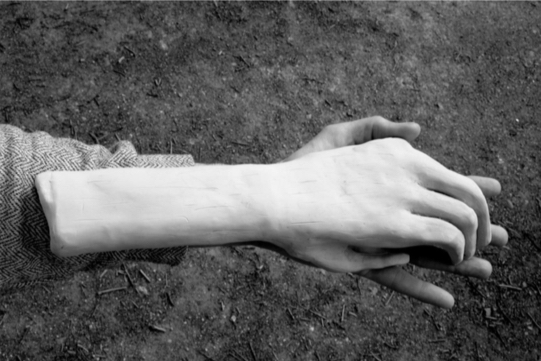
05. The Sculptor, the Model, the Referent (Cabinet of Gestures) Invitation card

01.
01. Abbreviate, Suspend, Envelope the Vaguest Shapes. In the video we see a man performing a movement-sequence. It is a translation of all sculptures of the second biannual in the Middelheim Museum in 1953. Most works of this exhibition were bought by the city and form the blue print of the collection of art of the city after the second world war. The performer does not isolate single sculptural positions, but stays in movement, creating a searching, flowing movement. The video is shown in a pavilion that is based upon the architecture used in the Middelheim Museum in the fifties.
06. Model of Attribution (I'm No Longer Dead, I'm In Love). The work consists of a table with a series of clay reproductions of sculptures that the city of Antwerp bought between 1947 and 1976. The clay was kept wet during the course of the exhibition and therefor remained deformable in the first weeks and after some time, fell apart.
Figure 1:
![]()

Figure 2:
![]()
06. figure 1&2, Model of Attribution (I'm No Longer Dead, I'm In Love)

06. figure 1&2, Model of Attribution (I'm No Longer Dead, I'm In Love)

01.
04. The Ideal Form is an inquery that was send to over 200 persons involved in the local politics of Antwerp, Belgium. In a succesion of questions these persons are asked to define a hypothetical shape or form that could fit their taste and political viewpoint.

04.

01.
05. The Sculptor, the Model, the Referent (Cabinet of Gestures) was an installation in and around the Aubette pavilion at the Middelheim Museum that consisted of a series of wooden shelving and display systems, upon which sit concrete casts of utensils from the artist’s studio, alongside partial casts of sculptures in the Middelheim Museum collection – such as a hand from Henry Moore’s King and Queen (1952), or a leg from In de Zon [In the Sun] (1947) by Oscar Jespers.

06.

05.

07. The Last Acquistion, performance
07. The Last Acquisition. In this performance the sculpture collection of the Middelheim Museum was translated onto the body of a performer. The performance imitated a guided tour in which the performer spoke ‘in tongues’, using historical documents and the works on display as the basis for a series of dialogues in a multitude of roles.

07.
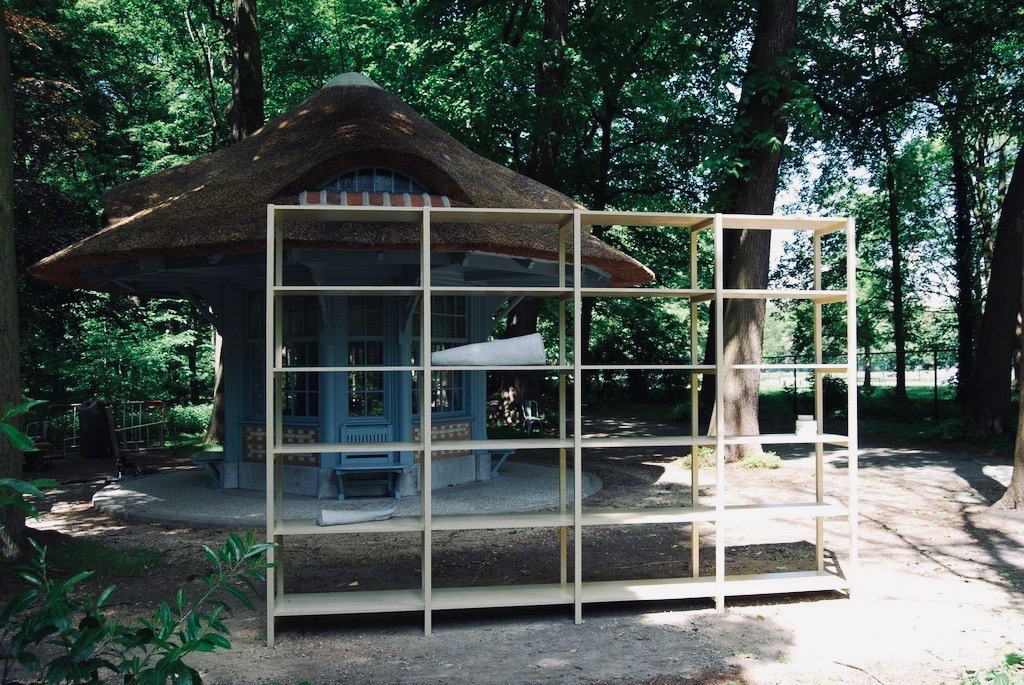
05.

06.
02. Les XX
The video works The Peacock Walk (Wise Up Ghost), The Room of Emile Verhaeren and Looking While Listening take the avant garde movement Les XX (Les vingt) as a starting point. Les XX was the name of a group of writers, painters and architects that grew up in Belgium around 1900. The group organized itself and exhibited together at its own alternative art salons. This group, who included writer Emile Verhaeren, painter Theo Van Rysselberghe and architect Henry Van de Velde, articulated new ideas and developed new discourses that emerged within the changing society and community around 1900.
The video works The Peacock Walk (Wise Up Ghost), The Room of Emile Verhaeren and Looking While Listening take the avant garde movement Les XX (Les vingt) as a starting point. Les XX was the name of a group of writers, painters and architects that grew up in Belgium around 1900. The group organized itself and exhibited together at its own alternative art salons. This group, who included writer Emile Verhaeren, painter Theo Van Rysselberghe and architect Henry Van de Velde, articulated new ideas and developed new discourses that emerged within the changing society and community around 1900.
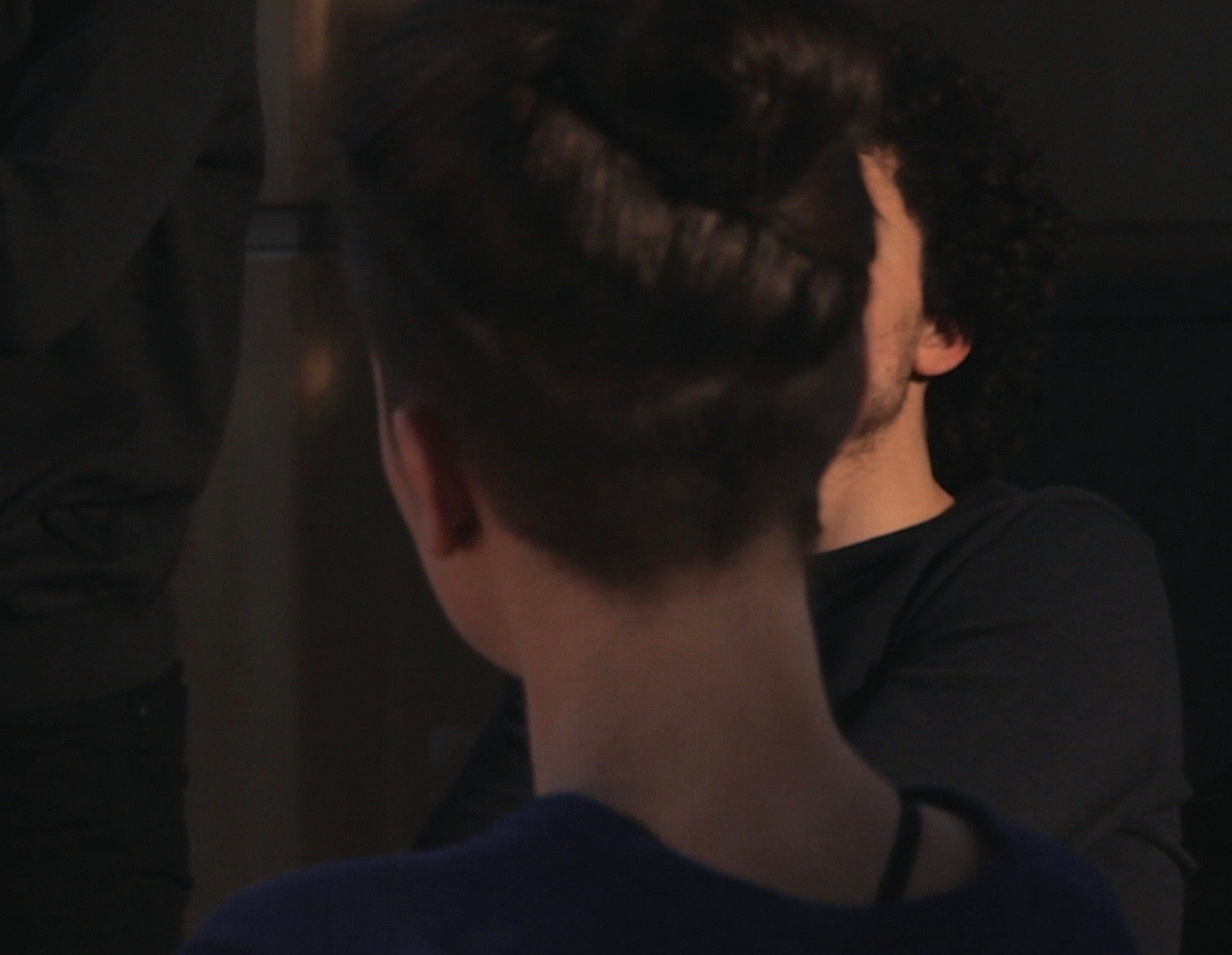
02. Looking While Listening, two video- works, 09:17 and 03:07 mins., mute, seperate audio track 06:11 mins.

01. The Peacock Walk (Wise Up Ghost), video 4:11 mins, sound

03. The Room of Emile Verhaeren, Video, 16:9, 4:42 min., sound

02.
02. Looking While Listening was based upon the painting A Lecture, by the Belgian painter Theo Van Rysselberghe in which we see a group of friends, all part of the Belgian artistic scene around 1900 known as Les XX, listen and anticipate on a lecture being read by writer Emile Verhaeren. The installation centres on listening and on exploring what listening as an activity entails. How is it that we prefer the visual and linguistic as model or referent over the acoustic? I worked with a group of eight actors, performers and artists to develop performative material on listening. There are several elements to the work: an autonomous sound recording or ‘lecture’ with a text that is based upon the work of Jean-Luc Nancy, Pieter Verstraete and Gemma Corradi Fiumara and two video works. The work was recorded on the top floor of the ‘Book Tower’ of the University in Ghent, designed by architect Henry Van de Velde, one of members of Les XX.

02.

01.

01.
01. The Peacock Walk (Wise Up Ghost) was recorded at Villa Robinson, France – holiday home of Belgian composer and poet Georges Flé. Many artists became regular guests, turning the house into an important site of exchange between the artistic scenes in France and Belgium. Some of Theo Van Rysselberghe’s paintings were painted there, including The Promenade (1901), which depicts four women in white dresses. The women themselves – nicknamed ‘Les Peacocks’ – organized salons with music and poetry. In the house we re-enacted a number of scenes. The actors wear identical white costumes and are the protagonists in compact scenes consisting of choreographed gestures and actions.
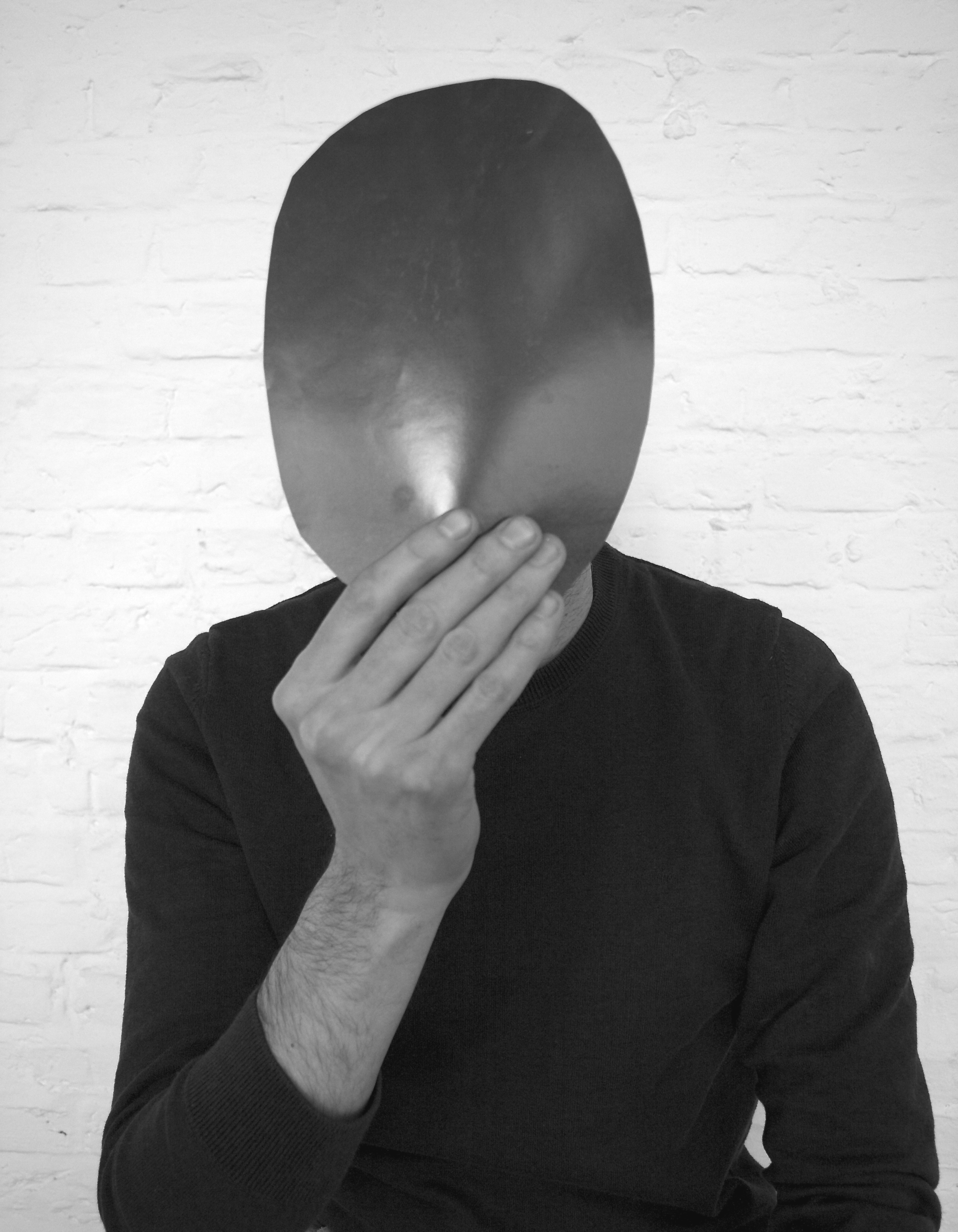
Invitation card Heden, The Hague
03. The Particular Unity of Same and Other
are the titles of a performance and two corresponding exhibitions at Rosa Brux, Brussels and at Heden in The Hague and a publication published by Motto books Berlin. The show in Brussels took place a month after the exhibition openend in The Hague. Both shows start from a travel that I made to Indonesia and reflects upon the image that proceeds the stranger and that remains after he or she has left.
The works on show in The Hague and Brussels are a collection of narrative fragments which refer to the period of European colonialism and in particular the Dutch/Indonesian history. Using the works that I made for the exhibition in The Hague as a mould for the exhibition in Brussels, I created a resonance between both places.
are the titles of a performance and two corresponding exhibitions at Rosa Brux, Brussels and at Heden in The Hague and a publication published by Motto books Berlin. The show in Brussels took place a month after the exhibition openend in The Hague. Both shows start from a travel that I made to Indonesia and reflects upon the image that proceeds the stranger and that remains after he or she has left.
The works on show in The Hague and Brussels are a collection of narrative fragments which refer to the period of European colonialism and in particular the Dutch/Indonesian history. Using the works that I made for the exhibition in The Hague as a mould for the exhibition in Brussels, I created a resonance between both places.

Installation overview at Rosa Brux, Brussels, Belgium

01. A Creature I Do Not Know, altered image in a book, passe-partout, glass
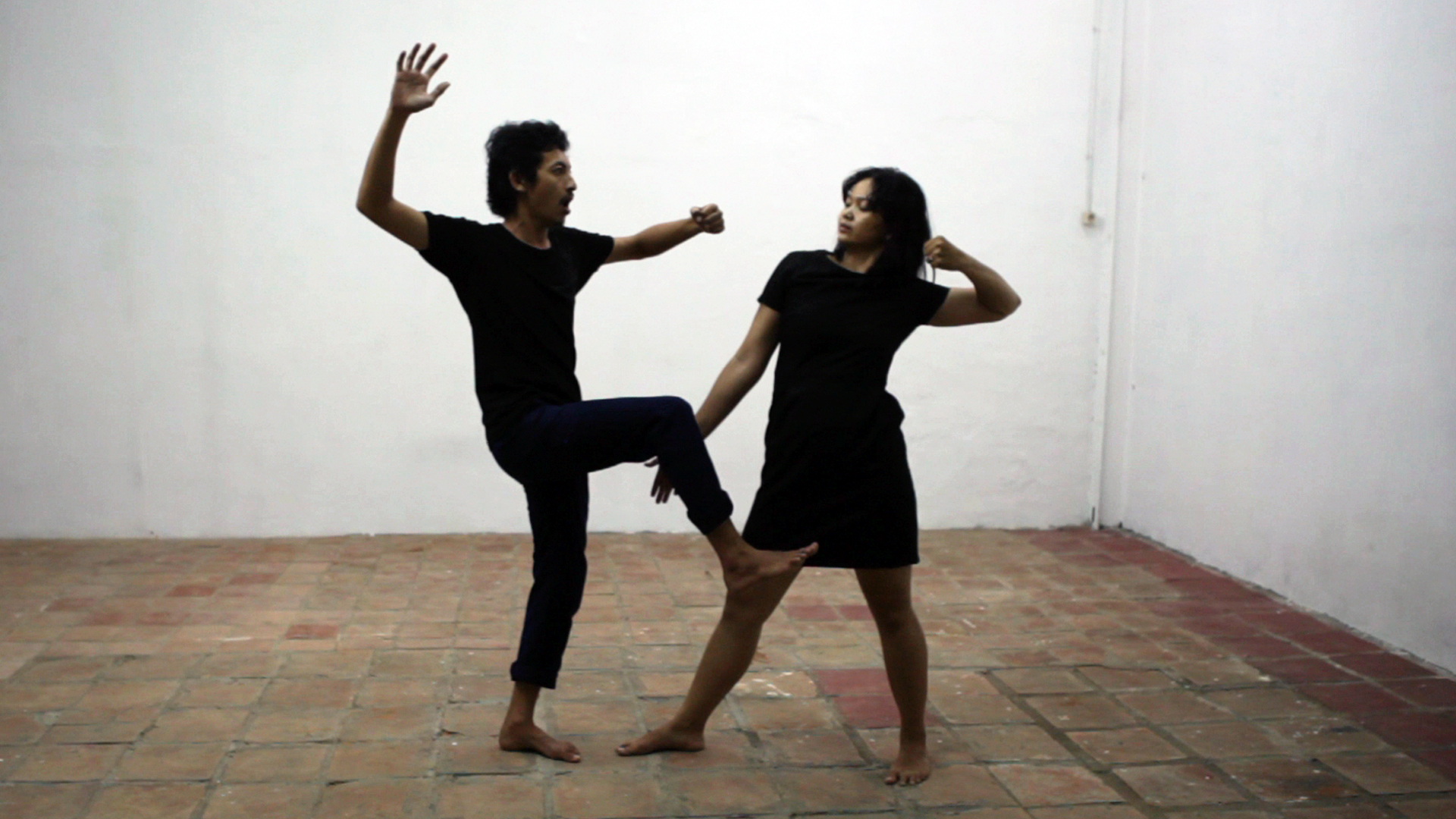
02. The Particular Unity of Same and Other, performance at Ark Gallery, Yogjakarta, Indonesia

03. Combats et duels, riso print on paper

Installation overview at Heden, The Hague, Netherlands
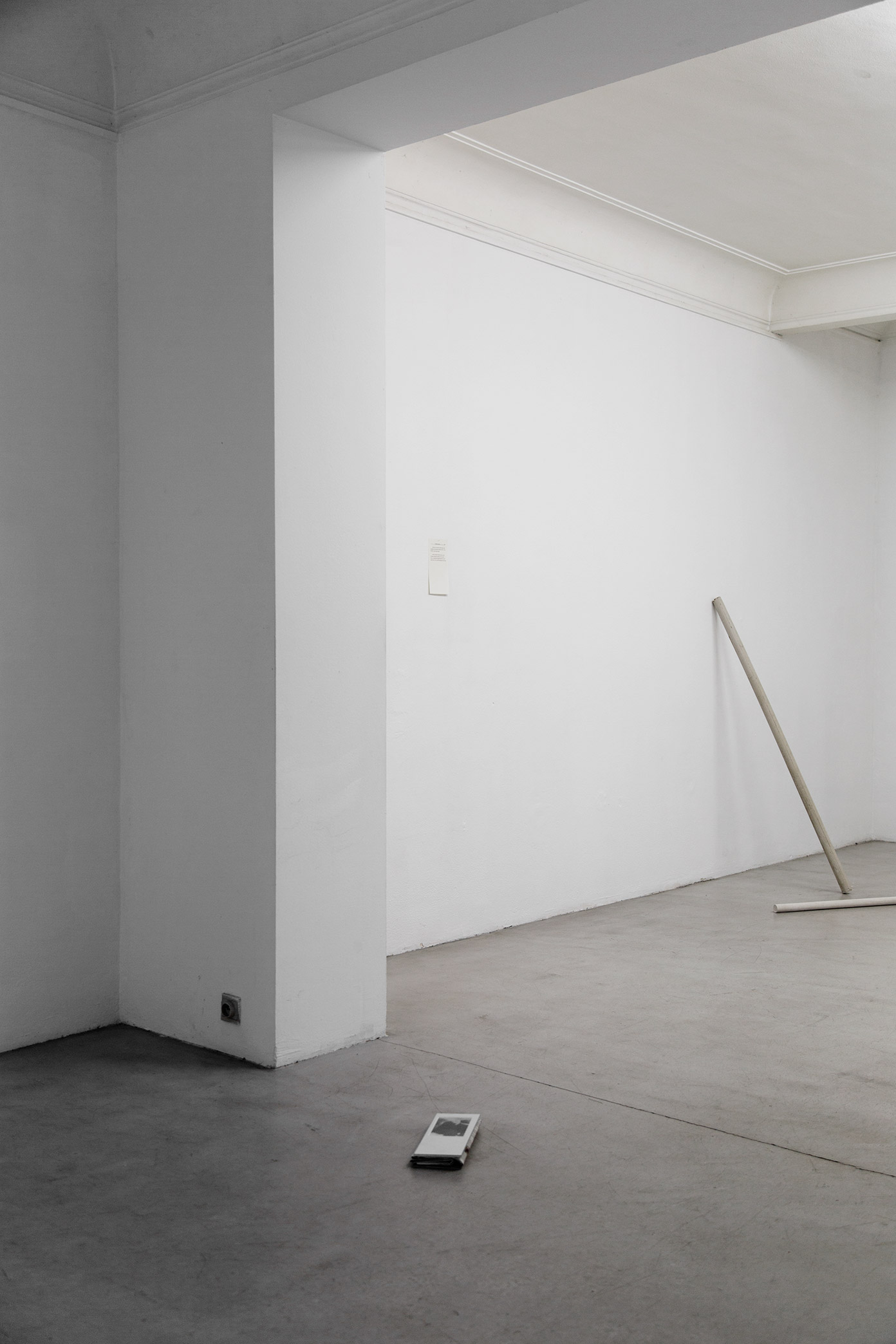
Installation overview at Rosa Brux, Brussels, Belgium
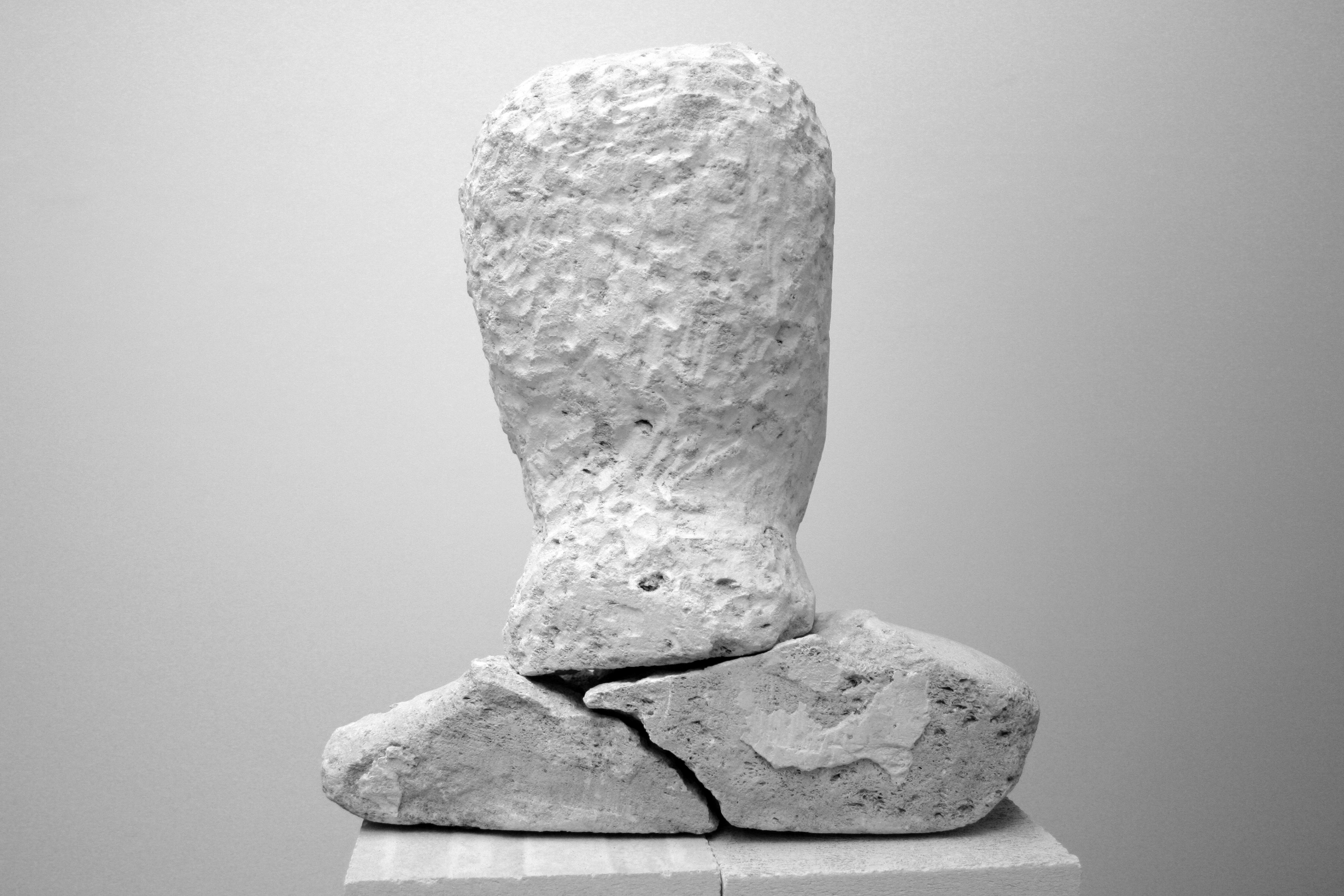
04. For the Avatar, stone sculpture presented on a cellular concrete plinth
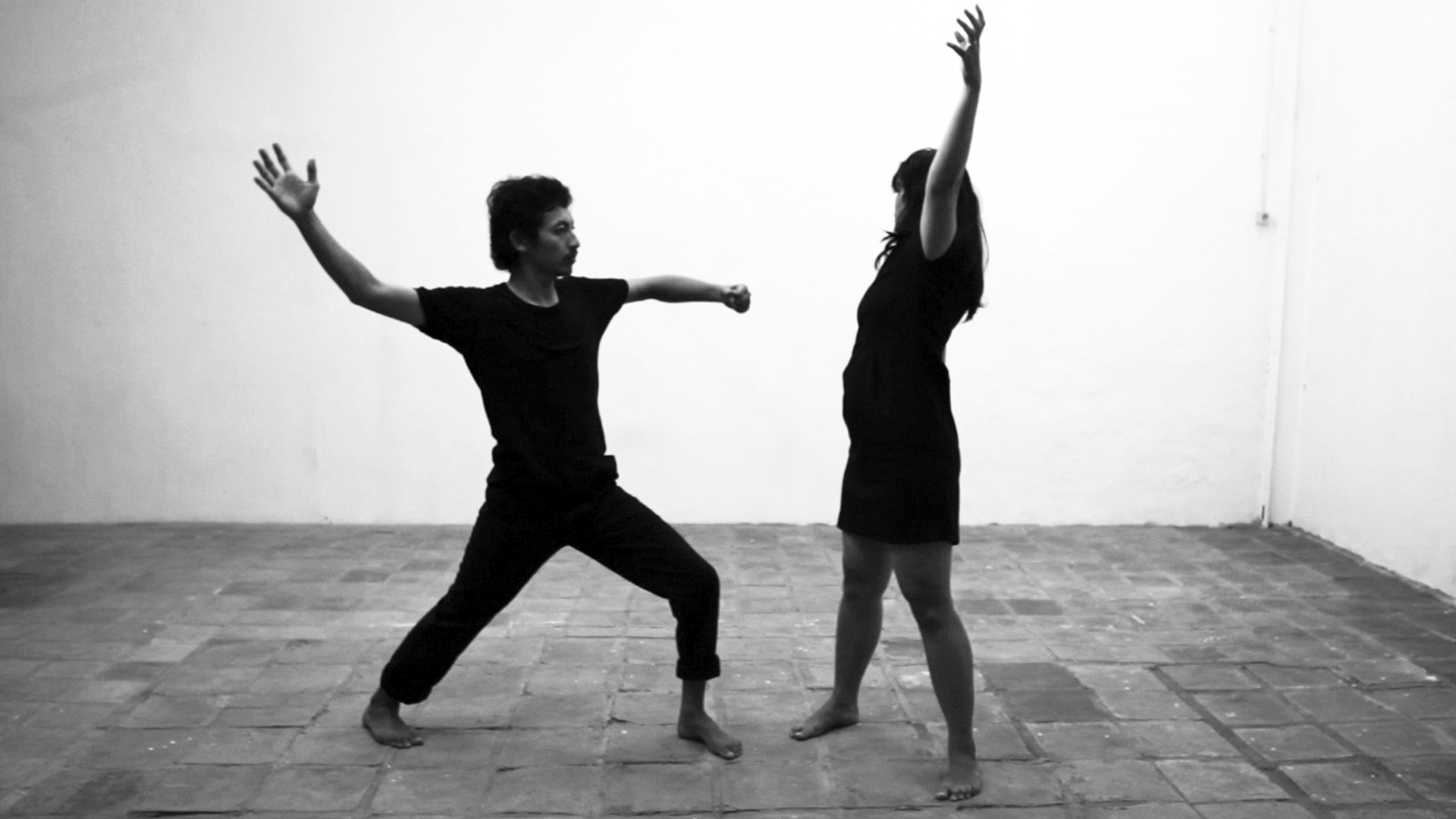
02.
02.
02. In the performance The Particular Unity of Same and Other I researched how encounters with ”others” by trade, war and during periods of colonisation gave specific input upon the Indonesian culture and, more specifically, on the body. I studied how dance and martial arts use foreign influences. By mimicking and adopting 'treaths', animal behavior and movements of strangers (like the Chinese and Arab traders and the Dutch and Japanese colonizers) the Indonesians adopted movements and turned them into defending strategies, creating a 'creole' body-culture.
02.
04. Hauntology of Smoke and OchreThroughout the project the complex and intriguing life and work of South African writer and poet Ingrid Jonker (1933-1965) plays an essential role. Jonker became politically engaged in the fifties when she vehemently opposed a law imposing censorship on publications and entertainment. Her work was published in Drum, a clandestine ‘black’ magazine, and in 1963 she won South Africa’s most prestigious literature prize with Rook en Oker (Smoke and Ochre). After her suicide in 1965 Jonker‘s work got forgotten, but after the fall the Apartheid-regime Jonker became a public figure of mythical proportions. The author, Jonker, is an exceedingly complex figure – if not a ‘complex’, then an organised totality of partly or completely unconscious ideas and memories, strongly engaged in affect – woven together from threads of history and narrative-biographical elements in the cultural and political ‘carpet’ of the South African Republic; only the after-image of her medial impression is present and tangible; as image: memory, story, gesture, comprehensible only in performative-theatrical mimesis. Hauntology of Smoke and Ochre focussed on the creation of Jonker’s social biography, exploring history and character as something constructed rather than given. Jonker’s texts and her mediated identities are assumed, transformed into symbols then imbued with various meanings by interested parties. Actresses, biographers, admirers, detractors, politicians piece together Jonker’s story, growing it into something ghost- like – unfixed yet omnipresent.

01. The The Tape-Recorded Surprise, Interview with I.J. Video-installation (double projection) 11:36 min. (with sound) and 7:10 min. (mute)
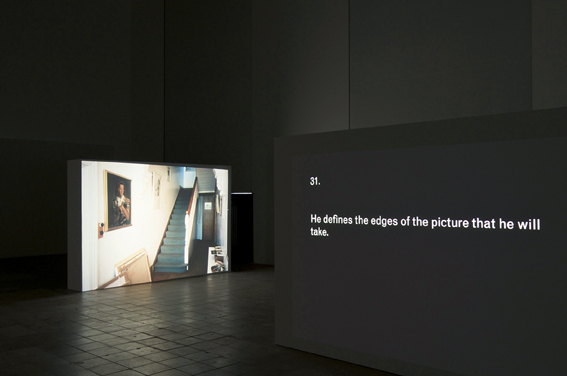
02. Inventory of Possible Narrations, slide installation. View at Smart project space,
Amsterdam, Netherlands

02.

02. Installation view at Kunsthalle Basel, Switzerland

02.

03. Poster, Silkscreen on paper, series of 10 different prints
in collaboration with Sarah Infanger

04. Moving Through Second Hand Sources, performance
02. Inventory of Possible Narrations is a multipart slide installation. The slides show pictures of the interiors in which Jonker lived and worked and/or about which she has written. One of the five screens shows a narrative that was created from fragments of Hendrikse ś notes that he took while travelling through South Africa. The slides are numbered 1 to 80, but not shown chronologically. The different fragments of narration start intertwining. As a reputedly real person, Jonker is propagated in a fictitious script, made in a fictitious, spatial scenario.

05. Manual, silkscreen on glass

01.
01. One of the core works of Hauntology of Smoke and Ochre is the two-channel video workThe Tape-Recorded Surprise; Interview with I.J. In the video-installation, that seems to have the form of a documentary, two actresses are presented to us.
One of them, Nicola Hanekom, recently portrayed the author in a play. The other, Grethe Fox, an older actress, knew Ingrid Jonker as a child and always wanted to perform her. I worked with both actresses for a week and carried out various interviews with them, concerning the role and acting. Though the interviews appear uncomplicated, the two women have actually swapped roles, each coaching the other on how to depict her falsified relationship to the iconic poet. As they resurrect Jonker’s character their subjective interpretations becomes a part of her story.
One of them, Nicola Hanekom, recently portrayed the author in a play. The other, Grethe Fox, an older actress, knew Ingrid Jonker as a child and always wanted to perform her. I worked with both actresses for a week and carried out various interviews with them, concerning the role and acting. Though the interviews appear uncomplicated, the two women have actually swapped roles, each coaching the other on how to depict her falsified relationship to the iconic poet. As they resurrect Jonker’s character their subjective interpretations becomes a part of her story.
07. In the video Writing, Over, Over we see a hand writing words and sentences in a notebook. In the course of a few months I selected fragments from original notebooks and letters of Ingrid Jonker and learned her handwriting. This process was captured in a notebook and on video.
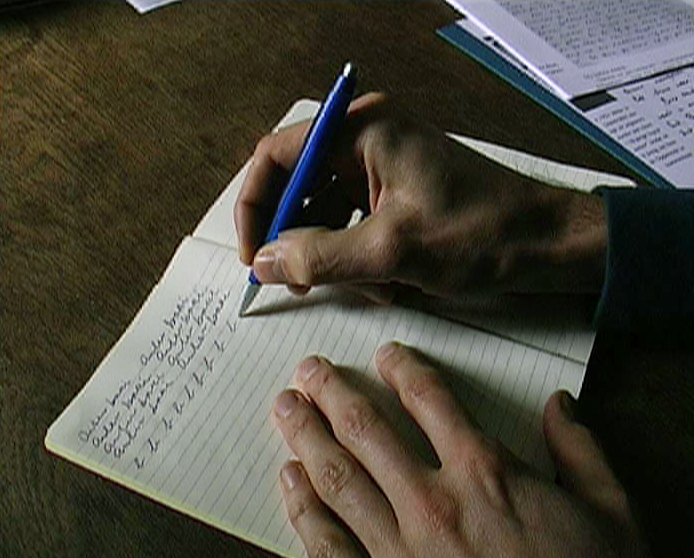
07. Writing, Over, Over
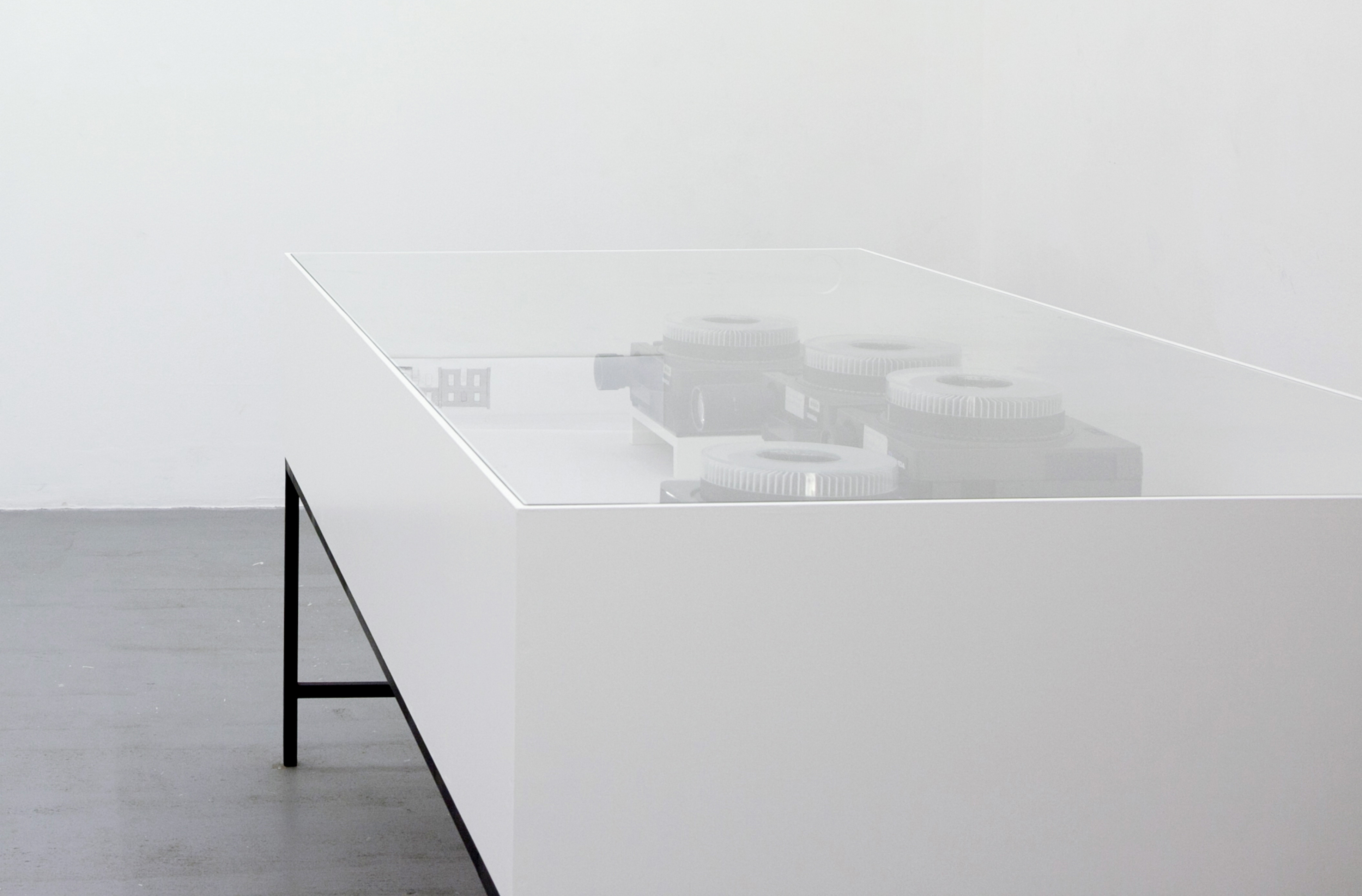
08. The Index (a Model), slide installation in a vitrine, overview at ENSAPC, Paris, France
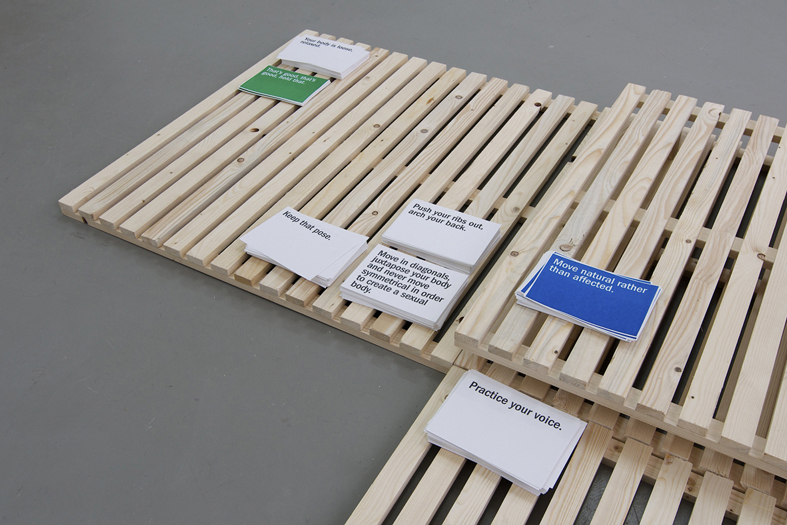
06. Letters as Actors, riso print on paper, to be taken by visitors
08. The Index (a Model) is a multipart slide installation. The slides show pictures of the interiors in which Jonker lived and worked and/or about which she has written. One of the five screens shows a narrative that was created from fragments of my notes that I took while travelling through South Africa. The slides are numbered 1 to 80, but not shown chronologically. The different fragments of narration start intertwining.

06.
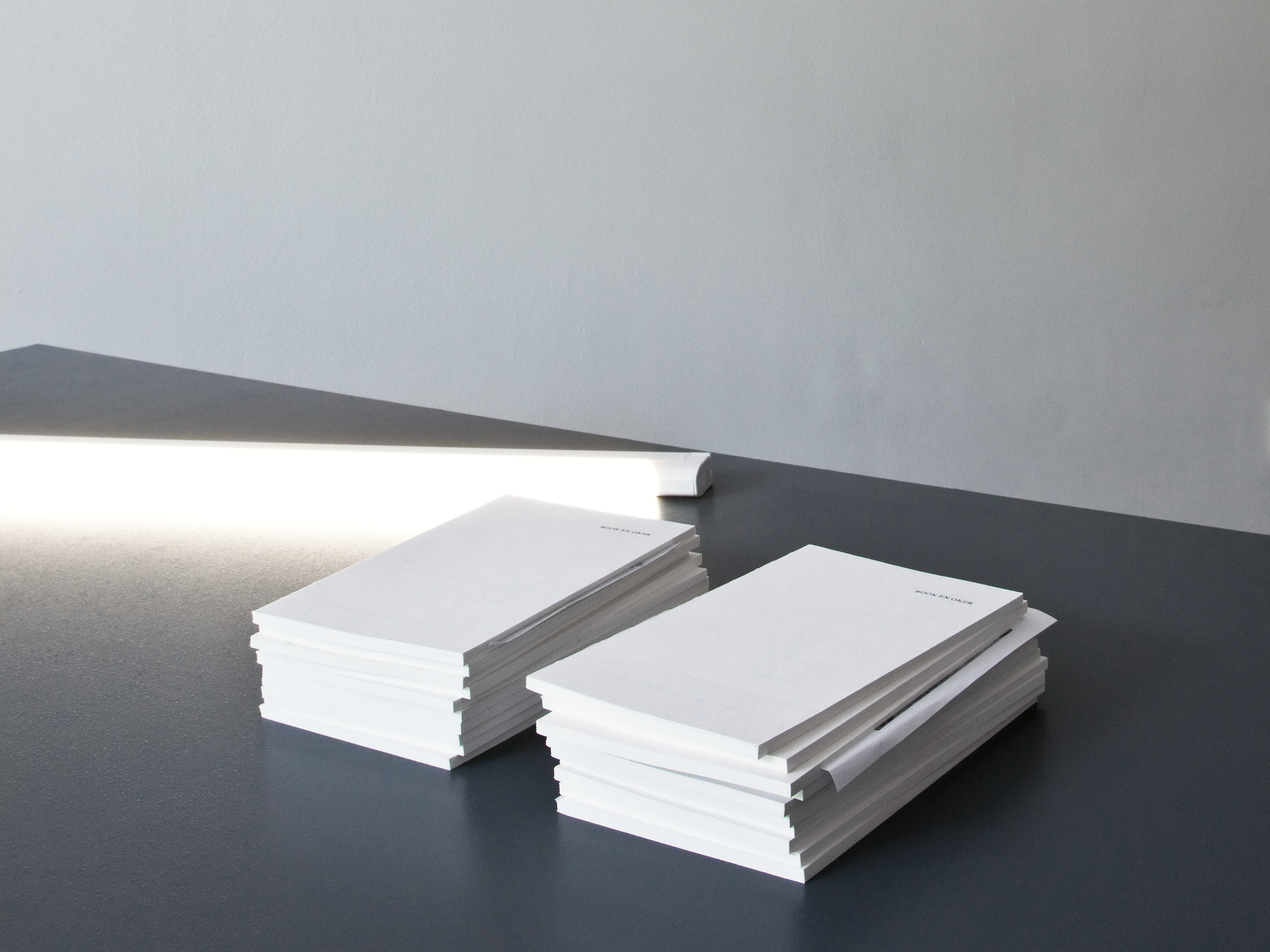
09. Smoke, Ochre. Smoke and Ochre is the title of a volume of poetry by Ingrid Jonker. The book, which has a very special design, is no longer available in the original form. For an exhibition at publisher Onomatopee, Eindhoven, NL, I made a reproduction of the original book (of the inside without the hardcover) in an edition of 50 copies. These copies were not for sale, but could be borrowed by visitors. Inserted into the book were several bookmarks.
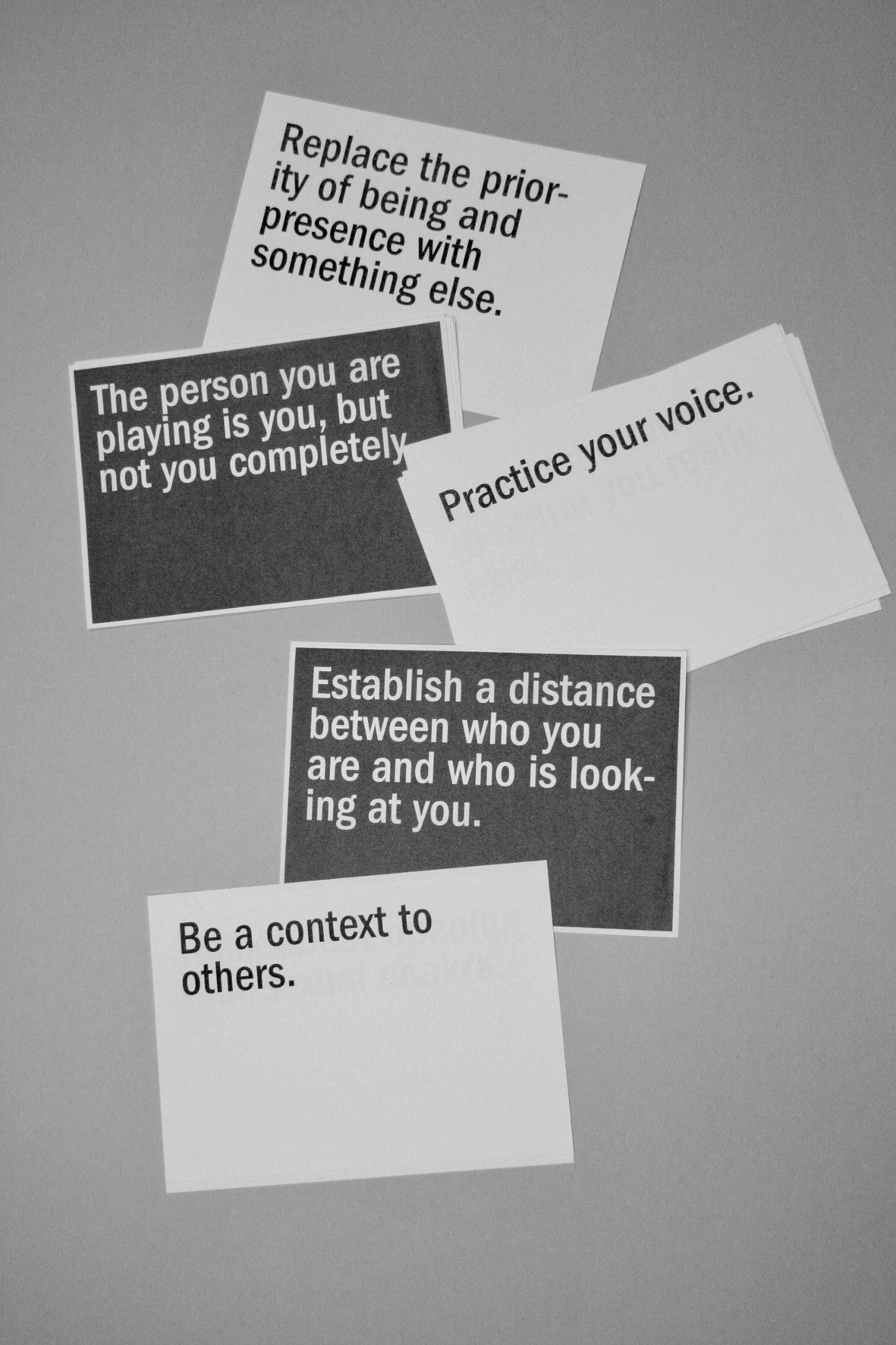
06.
05. Procedures for Underground
Procedures for Underground is an archive of performative fragments of non-representative bodies It collects movements that stray from norms and exist on the margins of our attention. This ‘archive’ is a collection of unease, off-balance, and wants to teach our and other bodies to stutter, to falter and fall short. The work is performed by two performers and myself who plays the role of ‘archivist’, each sequence that is performed is being noted down on paper resulting in abstract drawings or scores that trance the movements of the performers.
Procedures for Underground is an archive of performative fragments of non-representative bodies It collects movements that stray from norms and exist on the margins of our attention. This ‘archive’ is a collection of unease, off-balance, and wants to teach our and other bodies to stutter, to falter and fall short. The work is performed by two performers and myself who plays the role of ‘archivist’, each sequence that is performed is being noted down on paper resulting in abstract drawings or scores that trance the movements of the performers.

01.
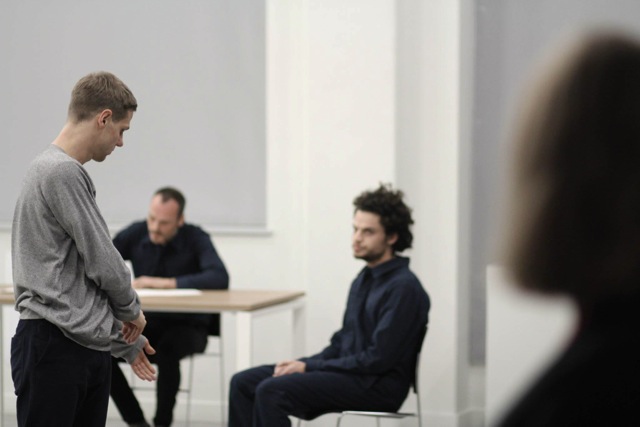
01.
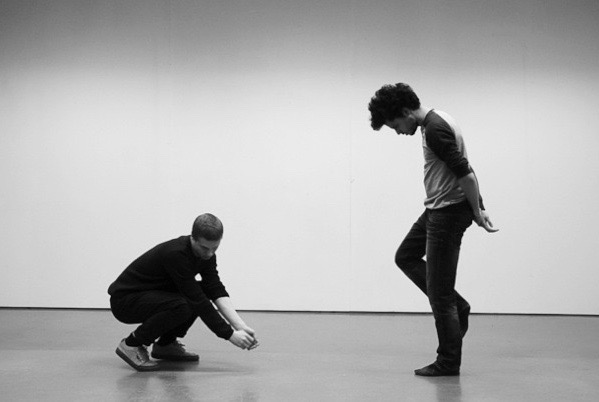
02.

01. Performance at Playground festival Museum M & STUK, Leuven, Belgium
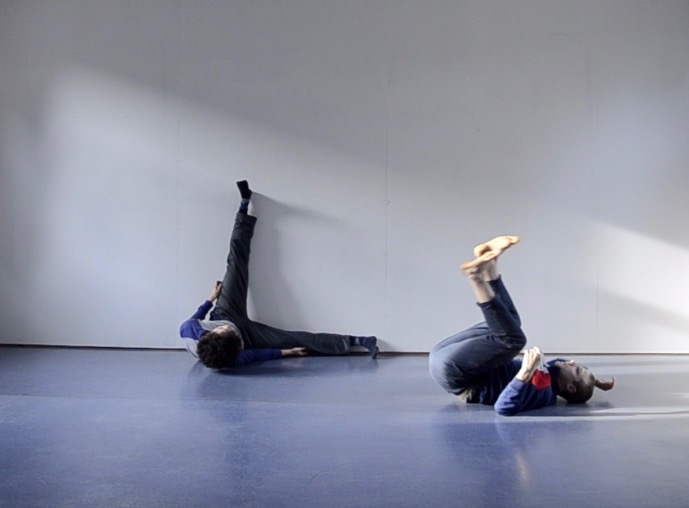
02. Still from the video archive
06. A Vague Uneasiness
starting point for A Vague Uneasiness is the legacy of the Cameroonian poet Louis-Marie Pouka- M’Bague (1910 – date of death unknown) who advocated the assimilation of the Cameroon people into the culture of the French colonisers. Convinced of the superiority of the French culture and lifestyle, he himself moved to France in 1940. However, French society did not fulfil his idealistic expectations and he returned disillusioned to Cameroon in the 1950s. His poems, previously an ode to French culture and ideology, then became characterised by a ‘vague uneasiness’ and a questing style of writing.
starting point for A Vague Uneasiness is the legacy of the Cameroonian poet Louis-Marie Pouka- M’Bague (1910 – date of death unknown) who advocated the assimilation of the Cameroon people into the culture of the French colonisers. Convinced of the superiority of the French culture and lifestyle, he himself moved to France in 1940. However, French society did not fulfil his idealistic expectations and he returned disillusioned to Cameroon in the 1950s. His poems, previously an ode to French culture and ideology, then became characterised by a ‘vague uneasiness’ and a questing style of writing.

01. Preliminary Mappings, slide work in a closed vitrine. Singular slide image.

Overview at S.M.A.K. Gent, Belgium
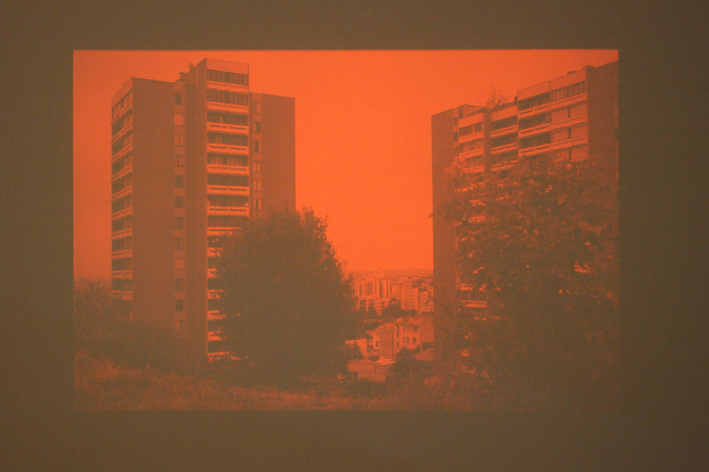
02. A Vague Uneasiness, dissolving double slide projection.
01. Preliminary mappings are a series of black and white slides in a closed vitrine. The images were made by German and French colonists and depict an inventory of Cameroun; landscapes, bridges, buildings and harbours.

01.

02.

02.
02. A Vague Uneasiness. This dissolving slide installation shows red filtered images that I made in Paris. I traced places that might have been important for Pouka- M’Bague and photographed the city while walking from one place to the other. The images are intersected with textual fragments about traveling, imagination, expectation and alienation.
03. My Fellow Traveller, series of 5 photos

04.
03. My Fellow Traveller. In this series old portraits of Europeans in a landscape in Cameroon were used. I manipulated the images by creating a fold which erases the person in the image.
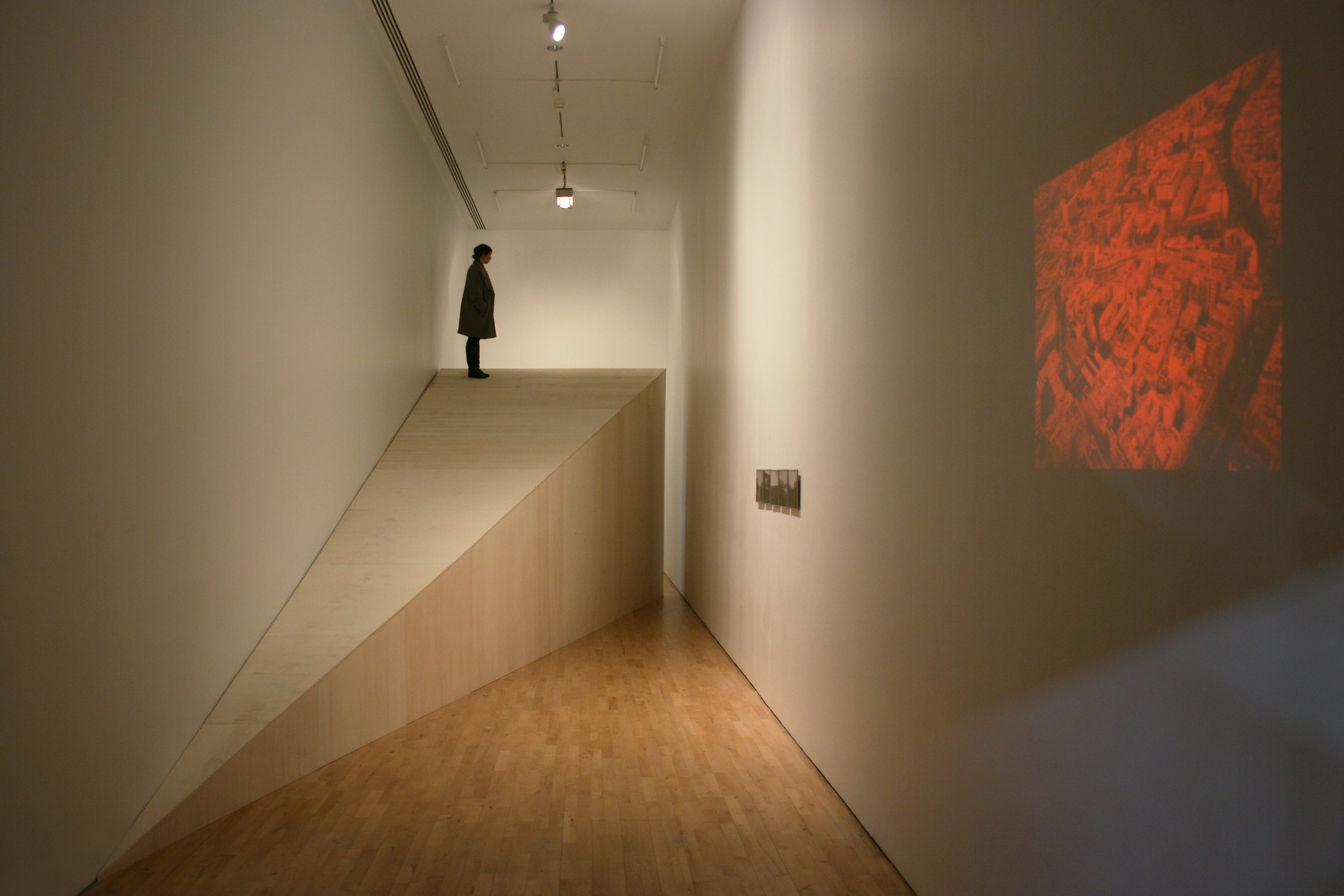
04. The Antropologist Gaze, wood, paint
04. The Antropologist Gaze is a wooden structure which resembles a view point. The structure devided the exhibitionspace in two parts. The structure left only a little space in between the one side and the other. The visitor of the exhibition was forced to go though the museum to watch the other room. In this room a gray column was standing. This column was the exact the size and shape of the space between the wooden view point structure and the wall.
02.
This website contains a selection of works by Paul Hendrikse, it will grow over time.
Get in touch if you want a full overview in pdf.